[ITA/ENG] Gaudì, the genius. A small tour in Barcelona
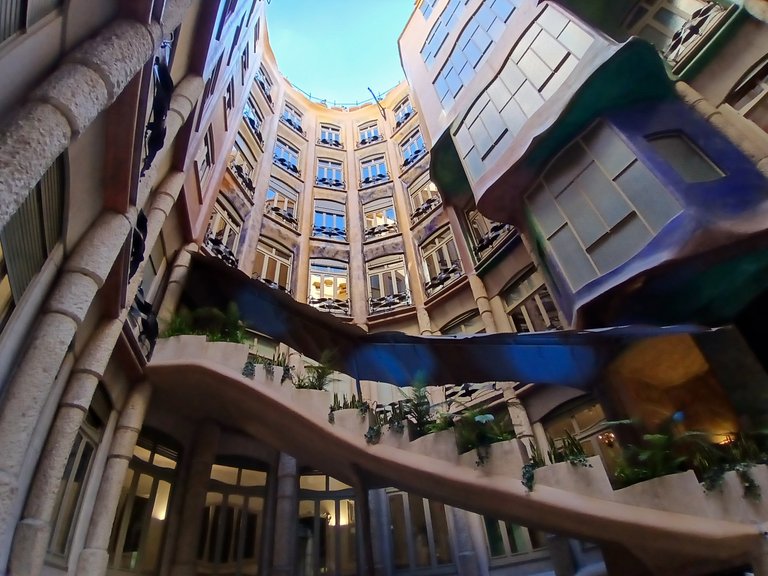
👉ITA/ENG Version👈
Quest'anno la domenica di Pasqua è caduta il 20 Aprile e lunedì di Pasquetta quindi il 21. Il 25 Aprile in Italia si festeggia la liberazione dal nazi-fascimo e quest'anno è caduta di venerdì.
Quale occasione migliore per prendere un po' di ferie e organizzare un piccolo viaggio? E così, booking.com a portata di smartphone, siamo volati a Barcellona.
Il 23 Aprile per Barcellona è un giorno particolare. Si festeggia Sant Jordi, patrono della Catalogna, e la città si riempie di persone e bancarelle. E' una festa se vogliamo paritetica a San Valentino, la festa degli innamorati, ed è usanza che le donne regalino un libro agli uomini e gli uomini contraccambino con una rosa rossa le donne.
Barcellona è la patria dell'architettura di Gaudì, un'architettura visionaria e magica. I palazzi, le case, il parc Guell lasciati da Gaudì, definito da Le Corbusier come il plasmatore della pietra, del laterizio e del ferro, non possono non affascinare chiunque giri per la città. E anche le sue opere architettoniche omaggiano in quel giorno il santo e l'amore.
La prima casa che abbiamo visitato è stata casa Battlò.
This year, Easter Sunday fell on April 20th, and Easter Monday - known in Italy as Pasquetta -on the 21st. April 25th is a national holiday in Italy, celebrating the liberation from Nazi-Fascism, and this year it landed on a Friday.
What better occasion to take a few days off and plan a little trip? So, with Booking.com just a tap away on our smartphones, we flew to Barcelona.
April 23rd is a special day in Barcelona. It's Sant Jordi’s Day, the patron saint of Catalonia, and the city fills with people and market stalls. It’s a celebration somewhat equivalent to Valentine’s Day - the holiday of lovers. Tradition has it that women gift men a book, while men give women a red rose in return.
Barcelona is the land of Gaudí’s architecture—visionary and magical. The buildings, homes, and Park Güell left behind by Gaudí—whom Le Corbusier once described as the sculptor of stone, brick, and iron—never fail to captivate anyone wandering through the city. Even his architectural works pay tribute, on that day, to the saint and to love.
The first house we visited was Casa Batlló.
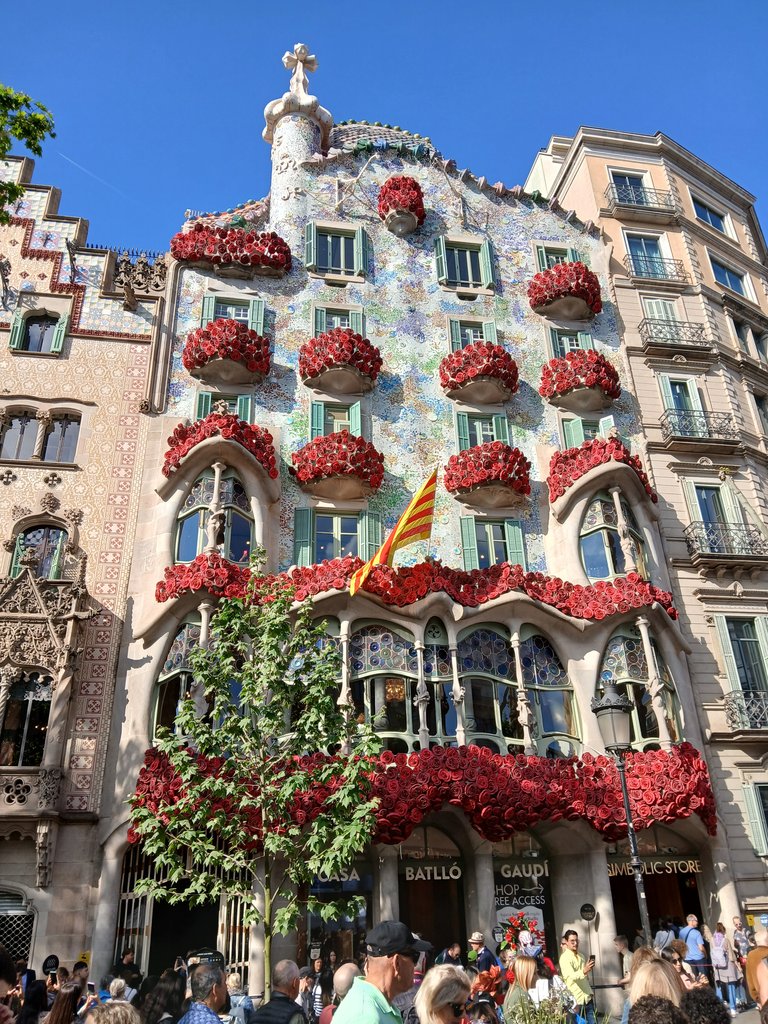
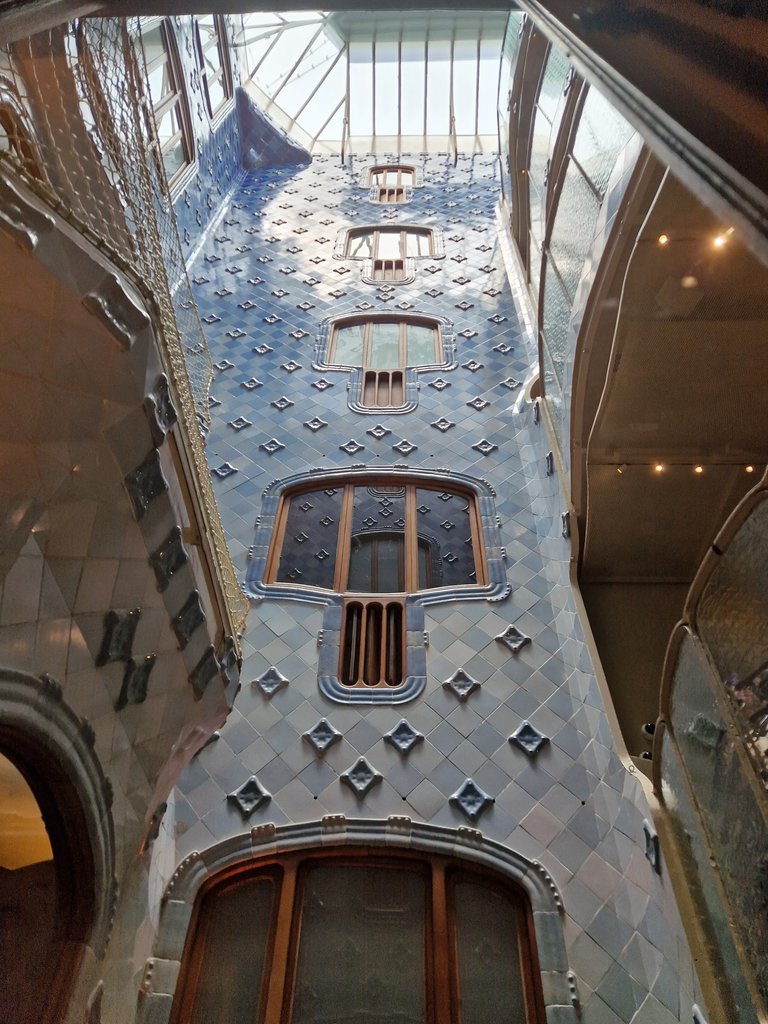


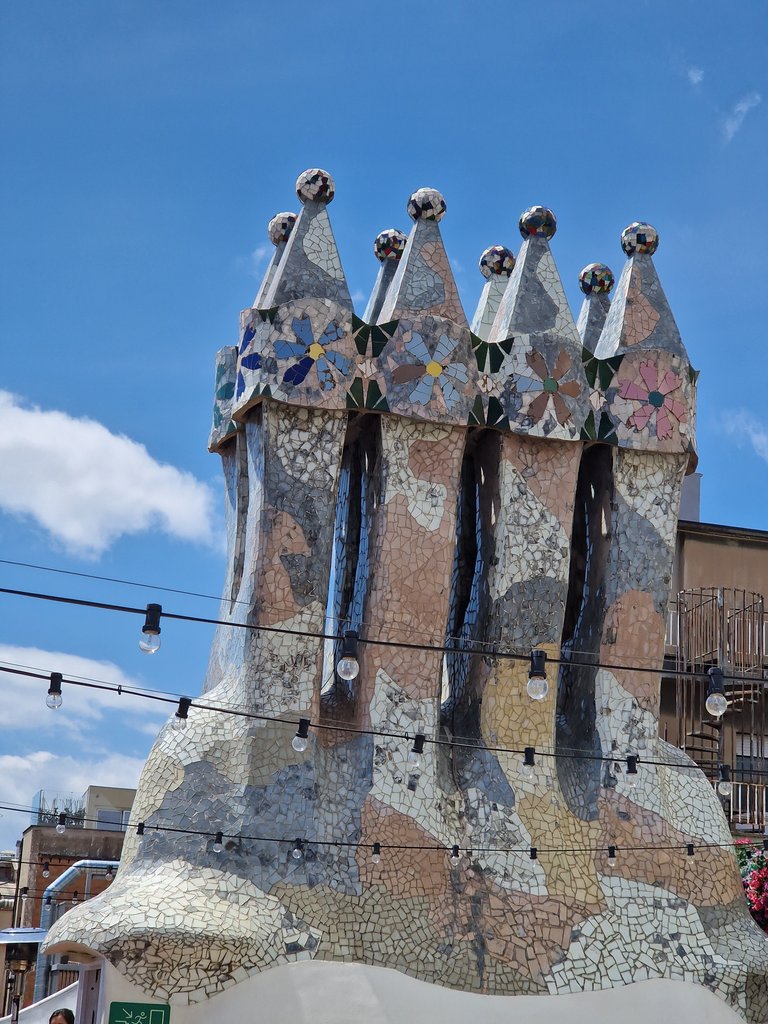

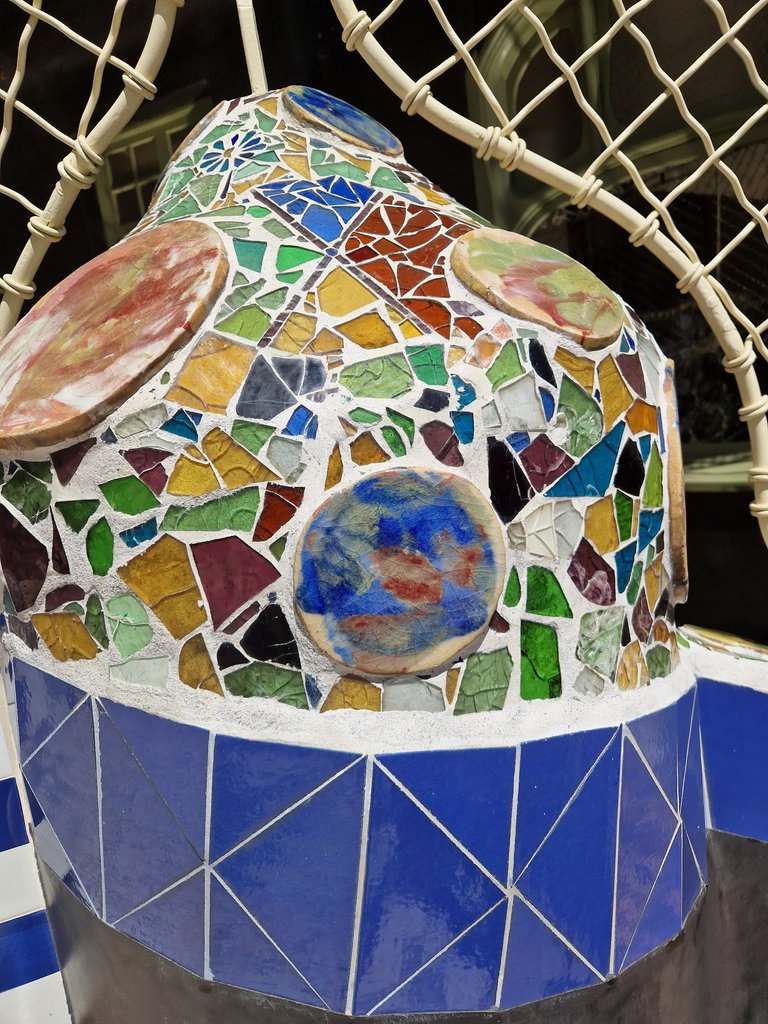
Tutte le opere di Gaudì sono fortemente ispirate alla natura. Casa Battlò è ispirata al mare. La chiostrina interna dove si snodano le scale che portano ai vari appartamenti della palazzina è tempestata di maioliche che partono da un celeste chiaro per passare, salendo i vari piani, ad un azzurro più intenso fino al blu oltremare. Come se Gaudì ci stesse facendo ascendere al contrario alle profondità dell'oceano. Fino ad arrivare al tetto con i suoi comignoli decorati alla maniera del Trencadis (ovvero con giochi di colori di maioliche , vetri e specchi a mosaico, materiali tutti di riclico), dove tutti vediamo la schiena di un drago, o forse un mostro marino che insieme alla sua croce è il perenne guardiano dei suoi condomini.
La seconda casa che abbiamo visitato è stata La Pedrera, che invece si ispira ad un grande bosco.
Sotto vedete le foto della corte interna (una è quella di copertina) e il plastico dell'imponente facciata.
All of Gaudí’s works are deeply inspired by nature. Casa Batlló, for example, draws its inspiration from the sea. The central lightwell, around which the staircases leading to the different apartments spiral, is covered in ceramic tiles that shift in color—from a light sky blue on the lower floors to a deeper azure and finally to an intense ultramarine on the upper levels.
It’s as if Gaudí were guiding us in reverse, ascending down into the depths of the ocean.
At the very top, the roof is adorned with chimneys decorated in the Trencadís style—a mosaic technique using colorful broken tiles, glass, and mirrors, all recycled materials.
There, we can all see the back of a dragon—or perhaps a sea monster—who, along with the cross, stands as the eternal guardian of the building’s residents.
The second house we visited was La Pedrera, which instead is inspired by a great forest.
Below, you can see photos of the inner courtyard (including the cover image) and the scale model of the building’s imposing exterior.




Ma la parte più spettacolare e singolare del palazzo è sicuramente il tetto, dove i comignoli sono ispirati a soldati delle epoche passate, con tanto di elmo e possente armatura. anch'essi probabilmente a protezione perenne dei visitatori del palazzo. E anch'essi decorati con la tecnica del trencadis.
Oppure potete vederci un bosco magico con cavalieri, alberi e animali parlanti. A tutti noi Gaudì lascia aperte le porte dell'immaginazione.
But the most spectacular and unique part of the building is undoubtedly the roof, where the chimneys are inspired by soldiers from times past, complete with helmets and powerful armor. They too seem to stand in eternal protection of the building’s visitors—and are also decorated using the trencadís technique.
Or perhaps you might see a magical forest filled with knights, trees, and talking animals. Gaudí leaves the doors of imagination open to all of us.
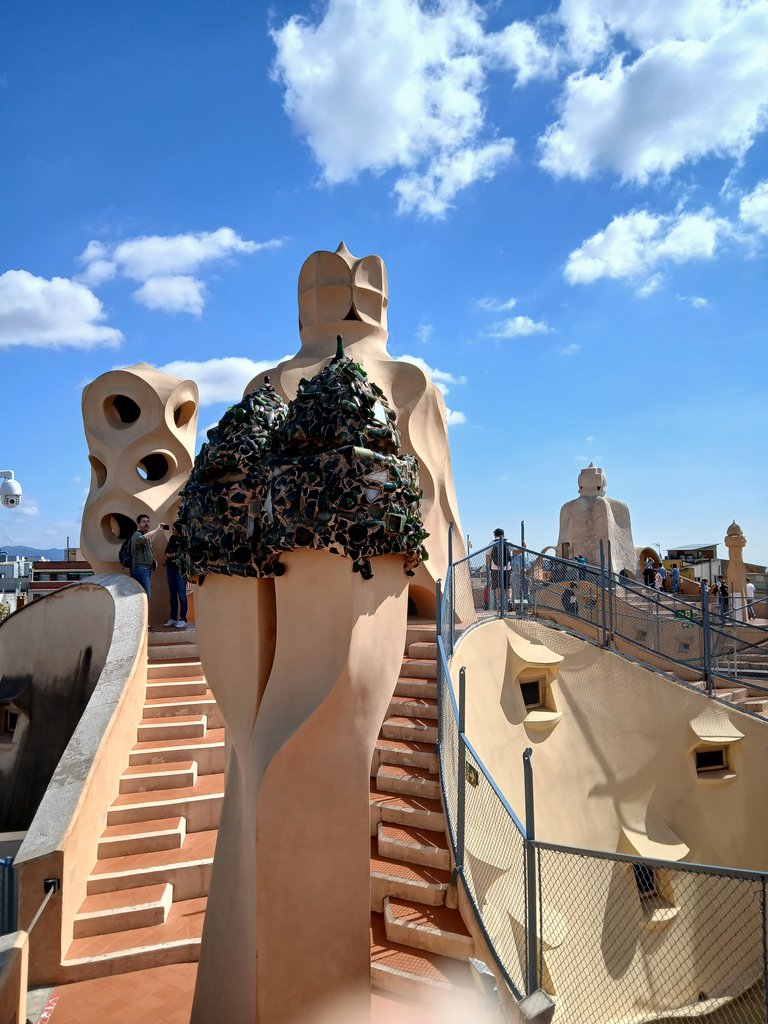
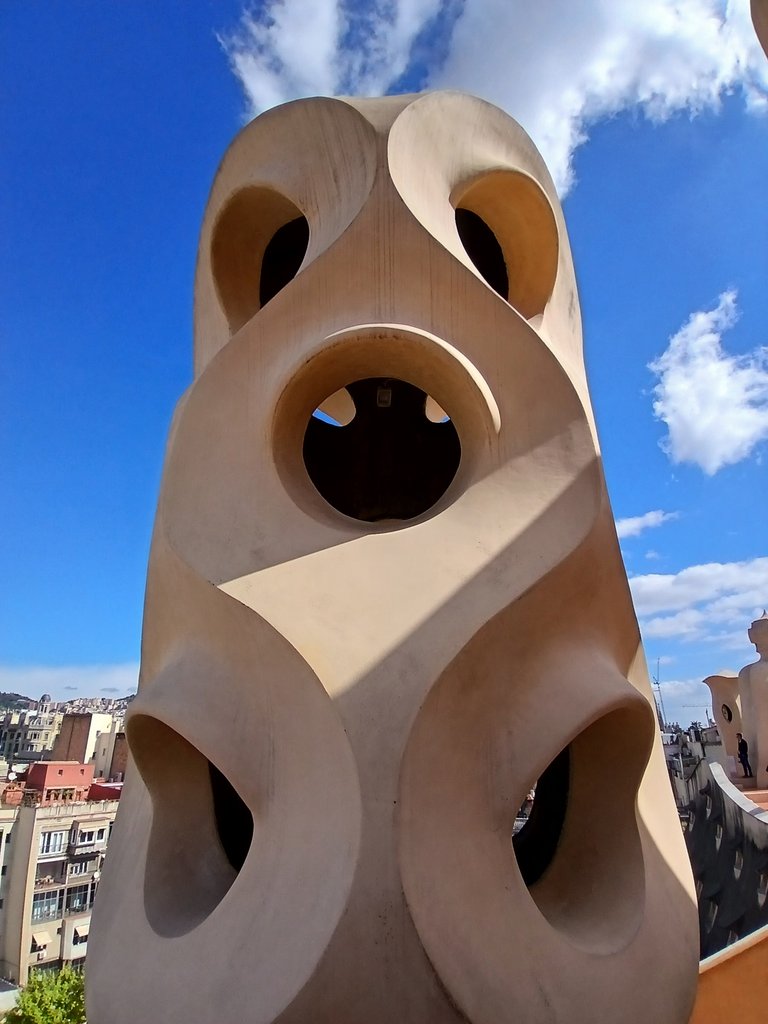


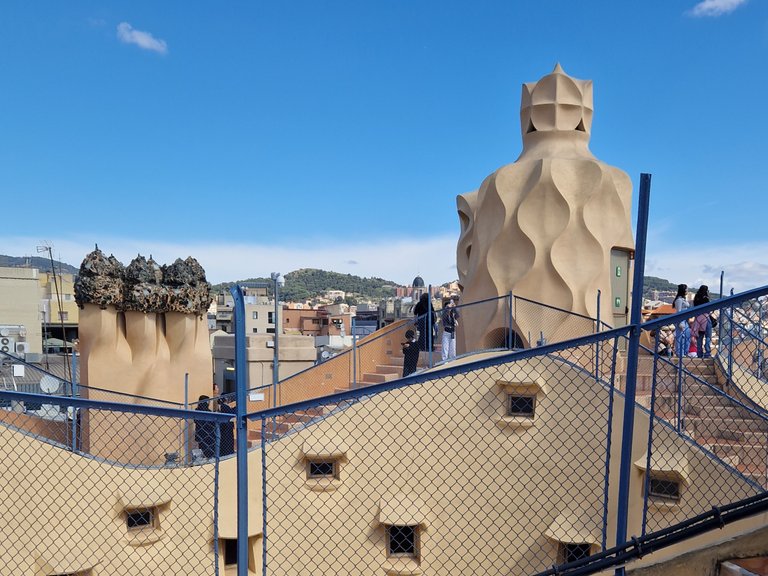
La terza opera di Gaudì che abbiamo visitato è stato il Parc Guell. E qui, nella città di Barcellona dove si possono trovare circa 400 rappresentazioni di draghi, che sono tutti un omaggio a Sant Jordi, si trova il drago più famoso di tutti: la salamandra di Gaudì, che poi è anche il simbolo di Barcellona stessa (ma non ce l'ho fatta a fotografarla, c'era troppa gente... 😄 quindi godetevi le casette stile pan di zenzero in piena favola Hansel e Gretel, solo che queste non si possono mangiare e non esce nessuna megera brutta e cattiva che ci vuole per cena!
The third Gaudí masterpiece we visited was Park Güell. And here, in the city of Barcelona—where you can find around 400 representations of dragons, all tributes to Sant Jordi—you’ll also find the most famous dragon of all: Gaudí’s salamander, which has even become a symbol of the city itself. (I couldn’t manage to get a photo—there were just too many people! 😄)
So instead, enjoy the gingerbread-style houses straight out of a Hansel and Gretel fairytale… just keep in mind that you can’t eat these, and no wicked witch is going to come out and try to cook you for dinner!



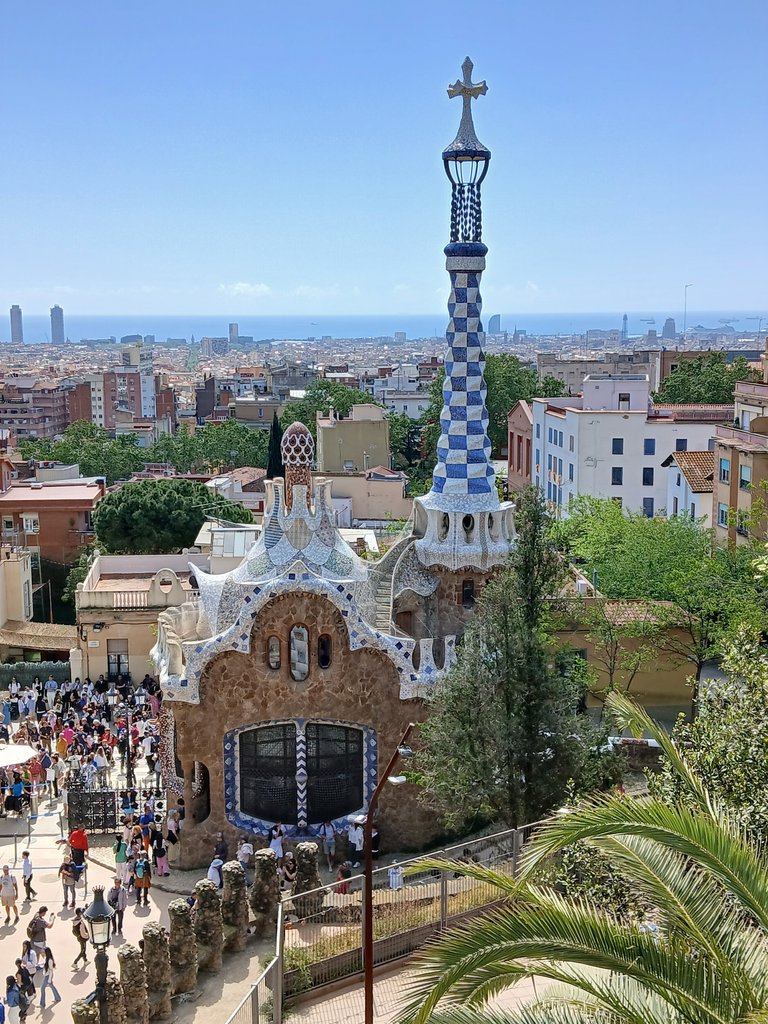


Per entrare nelle case e nei parchi di Gaudì, bisogna pagare un biglietto. Cosa normale direte voi. I soldi vanno alla fondazione Gaudì che si occupa del mantenimento costante delle opere architettoniche. E fin qui ancora normale. Il problema è il prezzo, che secondo me è davvero molto alto. Una famiglia di 4 persone come la nostra, con due ragazzi studenti, ha pagato circa 120 euro di biglietti, e non in totale, ma per location.
Le visite sono organizzate in modo eccellente: vengono rispettati gli orari in modo da non creare sovraffolamento interno (anche se quel giorno c'era tutta la Catalogna a Barcellona 😁), hai a disposizione un tablet con cuffie che ti permette di seguire il percorso in autonomia. Un viaggio che apre gli occhi sulla visione dell’artista e ti accompagna alla scoperta del suo mondo interiore, attraverso le opere straordinarie che ci ha lasciato.
Ma siamo stati ben contenti di pagarli. Nella fondazione infatti, sono impiegati tantissimi ragazzi che soffrono di neurodivergenze (per chi non lo sapesse, nello spettro dell'autismo). E sono loro che si occupano di accompagnare i visitatori. E l'autismo è una criticità che mi tocca davvero da vicino.
E allora se andate a Barcellona, non fate i taccagni! Anche perché, immergersi nel mondo di Gaudì e non vederlo solo dall'esterno, è davvero un'esperienza fiabesca!
A presto, piccole api di Hive!
Un abbraccio 💛
PS: Le foto sono tutte mie e provengono dai cellulari di famiglia, non so più riconoscere quali sono del mio Oppo o dei Samsung dei miei figli
To visit Gaudí’s houses and parks, you need to buy a ticket. Nothing unusual there, right? The money goes to the Gaudí Foundation, which takes care of the ongoing maintenance of these architectural wonders. Still perfectly reasonable.
The problem, in my opinion, is the price—it’s really quite high. A family of four like ours, with two student-aged kids, ended up paying around €120 per site. Not total—per location.
That said, the visits are excellently organized. Entry times are strictly followed to avoid overcrowding (though that day it felt like all of Catalonia was in Barcelona 😁). You’re given a tablet and headphones so you can follow the route independently—a journey that opens your eyes to the artist’s vision and lets you explore his inner world through the extraordinary works he left behind.
But honestly, we were happy to pay the price. The foundation employs many young people who are neurodivergent (for those unfamiliar with the term—it refers to individuals on the autism spectrum).
They’re the ones who accompany and guide visitors through the experience. And autism is something that’s very close to my heart.
So, if you’re heading to Barcelona—don’t be stingy! Because stepping into Gaudí’s world and seeing it from the inside, not just from the street, is truly a fairytale experience.
See you soon, little bees of Hive!
Big hugs 💛
P.S. All the photos are mine and were taken on our family phones—I honestly can't tell anymore which are from my Oppo and which came from the kids’ Samsungs!
Absolutely beautiful pictures! I love the designs of Gaudi, they are part of what makes Barcelona so special. I've seen them all several times over the years and they never get old. I'm so glad you were able to make the trip, I've always loved visiting Barcelona. I'm glad they hire people with autism, I have a brother who suffers from it as well.
What a great post, thank you for sharing!
!LUV
!PIZZA
It's the second time I visit Barcelona. I definetely love this city. I am so glad you liked and what you wrote about your brother. As a mother I had to learn a new world and I am still learning a lot. And I am even happier you loved the pictures because, to me, the most beautiful are my son's shots ♥️
$PIZZA slices delivered:
@thebighigg(8/15) tipped @sissim72
Come get MOONed!
Cara @sissim72 hai perfettamente descritto le opere di Gaudí, Barcellona è una delle città europee più belle fra quelle che ho visitato.
Grazie di essere passata, non vedo l'ora di vedere un post made in japan!
!LOLZ
lolztoken.com
Minute Mice
Credit: reddit
@conchita0806, I sent you an $LOLZ on behalf of sissim72
(2/6)
Awesome pics!

Delegate to Ecency and earn 100% daily curation rewards in $Hive!
Thank you 😊
!discovery 30
@tipu curate 2
Upvoted 👌 (Mana: 12/52) Liquid rewards.
Grazie!
!LOLZ
lolztoken.com
Udder Chaos!
Credit: reddit
@libertycrypto27, I sent you an $LOLZ on behalf of sissim72
(1/6)
Delegate Hive Tokens to Farm $LOLZ and earn 110% Rewards. Learn more.
This post was shared and voted inside the discord by the curators team of discovery-it
Join our Community and follow our Curation Trail
Discovery-it is also a Witness, vote for us here
Delegate to us for passive income. Check our 80% fee-back Program
Fantastico! Gaudì ti porta lontano con la fantasia....
Grazie!
Quell'arte modernista o art nouveau di quell'epoca è davvero bellissimo sembra magico, e Gaudì ha fatto meravigliosi capolavori, e non solo a Barcellona, ma è certo che quella città è stata la sua tela in bianco dove creare queste opere incantevoli!
!LUV
!HUG
Verità!
!LOLZ
lolztoken.com
They're both Paris sites.
Credit: dyson-the-booper
@duvinca, I sent you an $LOLZ on behalf of sissim72
(2/6)
Farm LOLZ tokens when you Delegate Hive or Hive Tokens.
Click to delegate: 10 - 20 - 50 - 100 HP